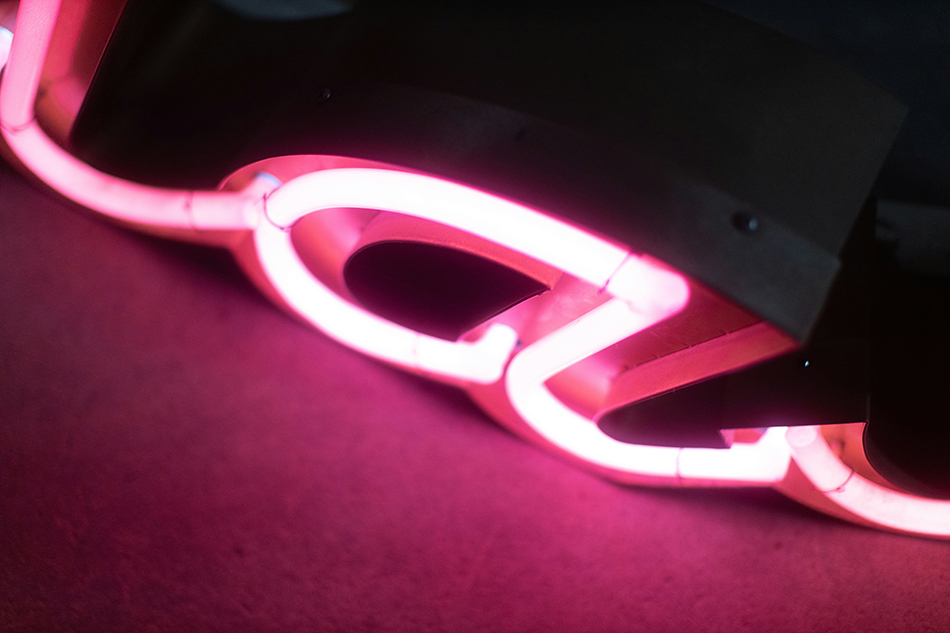Time:2025-06-04
Museums and galleries face the dual challenge of showcasing artifacts in their truest form while safeguarding them from environmental degradation. Neon LED flex strips have emerged as a transformative solution for museum lighting, offering curators and lighting designers a tool that balances aesthetic fidelity, conservation compliance, and energy efficiency. This technology is redefining how cultural heritage is illuminated, ensuring both visual impact and long-term preservation.
Technical Precision: Meeting Museum-Grade Standards
Neon LED flex strips are engineered to address the unique demands of museum environments:
UV-Free Illumination: Advanced LED technology emits no ultraviolet (UV) or infrared (IR) radiation, preventing pigment fading, textile degradation, or material warping in sensitive artifacts.
High Color Accuracy: Enhanced color rendering ensures true-to-life representation of artworks, critical for exhibits where subtle hue variations convey historical or cultural significance.
Adjustable Intensity and Temperature: Dimmable controls and tunable white light allow precise adjustments to match conservation guidelines, ambient conditions, or thematic displays.
Low Heat Emission: Minimal thermal output eliminates risks of heat damage to delicate items like parchment, oils, or organic materials.

Applications in Museum and Gallery Settings
Display Case Accentuation
Neon LED flex strips provide uniform, shadow-free illumination inside vitrines, highlighting ceramics, jewelry, or manuscripts without direct exposure to harmful light. Flexible profiles adapt to curved or angular case designs.
Wall-Mounted Art and Canvas Lighting
Install flex strips along picture rails or recessed channels to frame paintings or tapestries. Directional optics focus light precisely, minimizing glare and ensuring even coverage across large surfaces.
Sculptural and 3D Art Highlighting
Wrap flex strips around plinths or embed them in bases to create dramatic uplighting for statues, installations, or archaeological finds. Adjustable angles emphasize texture and depth.
Interactive and Thematic Exhibits
Use RGB variants to dynamically alter gallery atmospheres—transitioning from warm, incandescent-like tones for historical periods to cool, modern hues for contemporary art.
Architectural and Pathway Guidance
Illuminate staircases, corridors, or signage with low-intensity flex strips, enhancing visitor navigation while maintaining a subdued ambiance that prioritizes exhibit focus.
Advantages Over Conventional Museum Lighting
Conservation Compliance: Adheres to international standards (e.g., ICOM, CIE) for light exposure limits, extending artifact lifespans.
Energy Efficiency: Reduces operational costs compared to halogen or incandescent systems, aligning with sustainability mandates.
Discreet Integration: Slim, flexible designs remain unobtrusive, preserving the visual integrity of exhibits and architectural elements.
Longevity: Durable silicone coatings and robust LEDs minimize maintenance disruptions in climate-controlled, secure environments.
Installation and Maintenance Protocols
Light Exposure Management: Use timers or sensors to automate daily light doses, ensuring cumulative exposure stays within conservation thresholds.
Surface Compatibility: Employ archival-grade adhesives or magnetic mounts to avoid chemical interactions with historic materials.
Climate Adaptation: Select humidity-resistant variants for exhibits in non-climate-controlled zones or traveling displays.
Regular Calibration: Periodically verify color temperature and intensity with lux meters to maintain consistency across galleries.
Case Study: Enhancing Visitor Experience
The Heritage Art Museum recently retrofitted its Renaissance wing with neon LED flex strips. By replacing outdated halogens, the museum achieved:
A 40% reduction in energy consumption.
Enhanced clarity in showcasing delicate tempera paintings, with visitors noting improved color vibrancy.
Streamlined maintenance due to the strips’ modular design, allowing quick repairs without dismantling displays.
Future Innovations in Museum Lighting
Adaptive Smart Systems: AI-driven lighting that adjusts in real time based on crowd density, time of day, or artifact sensitivity.
Biometric Feedback Integration: Systems that tailor lighting to visitor engagement levels, optimizing focus and comfort.
Sustainable Material Advances: Recyclable flex materials and solar-powered units for off-grid or eco-certified exhibitions.
Augmented Reality (AR) Synergy: Combine flex strips with AR projections to create layered narratives, offering contextual lighting for digital overlays.
Conclusion
Neon LED flex strips are revolutionizing museum lighting by harmonizing the needs of conservation, aesthetics, and sustainability. Their ability to deliver precise, safe, and adaptable illumination positions them as an indispensable tool for preserving humanity’s cultural legacy while engaging modern audiences. As museums evolve into dynamic, interactive spaces, this technology will continue to illuminate the delicate balance between showcasing art and protecting it for future generations.
For institutions committed to excellence in curation and visitor experience, adopting neon LED flex strips is not just an upgrade—it’s a pledge to honor the past and innovate for the future.